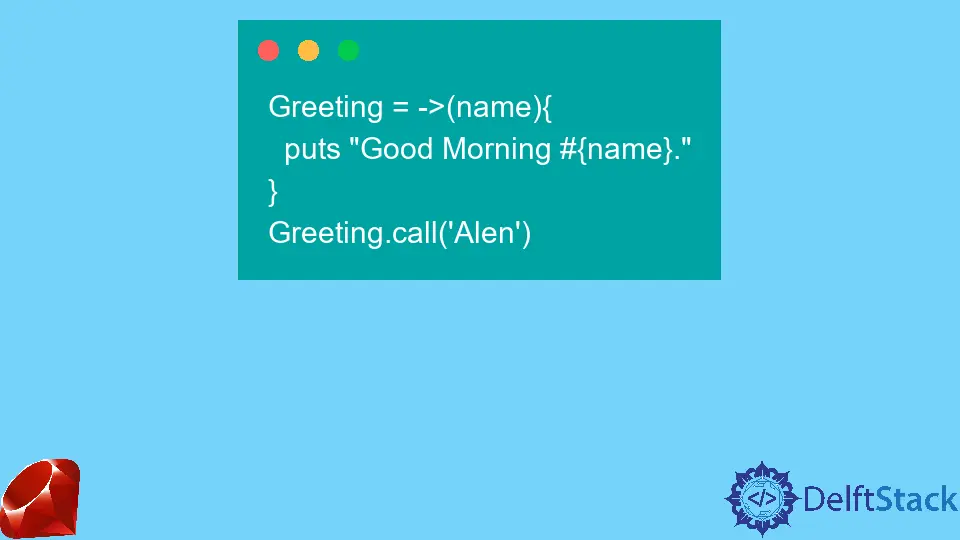call() and send() in Ruby
- What is call() in Ruby?
- What is send() in Ruby?
- Practical Applications of call() and send()
- Conclusion
- FAQ

Ruby is a dynamic, object-oriented programming language known for its simplicity and productivity. Among its many features, the methods call() and send() stand out as powerful tools that allow developers to interact with methods and objects in unique ways.
This tutorial will discuss how these methods work in Ruby, their differences, and when to use them. Whether you are a seasoned Ruby developer or just starting, understanding these methods can enhance your coding skills and improve your applications. Let’s dive into the world of Ruby and explore call() and send() in detail.
What is call() in Ruby?
The call() method in Ruby is primarily associated with Procs and lambdas. These are objects that encapsulate blocks of code, allowing you to execute them later. The call() method is used to invoke these blocks. This is particularly useful for creating reusable code snippets or for passing behavior as arguments to methods.
Here’s a simple example:
my_proc = Proc.new { |x| x * 2 }
result = my_proc.call(5)
puts result
Output:
10
In this example, we create a Proc object called my_proc that takes a parameter x and multiplies it by 2. When we call my_proc.call(5), it returns 10, demonstrating how call() executes the block of code encapsulated within the Proc.
The flexibility of call() allows you to pass different arguments, making it a versatile tool for functional programming within Ruby. You can also pass multiple arguments, and the Proc will handle them accordingly. This method is crucial for scenarios where you want to define behavior dynamically, such as in event-driven programming or callback functions.
What is send() in Ruby?
On the other hand, the send() method is used to invoke a method by its name, which can be particularly helpful when you want to call private or protected methods. This method takes the name of the method as a symbol or string and any arguments that the method might require.
Here’s an example:
class Example
private
def secret_method(name)
"Hello, #{name}!"
end
end
obj = Example.new
result = obj.send(:secret_method, 'Alice')
puts result
Output:
Hello, Alice!
In this code, we define a class Example with a private method secret_method. By using send(), we can bypass the visibility restrictions and call this method directly. This is particularly useful in metaprogramming, where you may need to invoke methods dynamically based on certain conditions or inputs.
The send() method is powerful, but it should be used judiciously. Since it allows access to private methods, it can lead to code that is harder to understand and maintain if overused. However, when used appropriately, it can greatly enhance the flexibility of your Ruby code.
Practical Applications of call() and send()
Understanding when to use call() and send() can greatly improve your Ruby programming skills. Here are some practical applications for each:
Using call() for Functional Programming
Functional programming is a paradigm that treats computation as the evaluation of mathematical functions. With call(), you can create higher-order functions that can accept other functions as arguments. This is useful in scenarios like event handling, where you can pass different behavior depending on user actions.
For example:
def perform_operation(operation, value)
operation.call(value)
end
double = Proc.new { |x| x * 2 }
square = Proc.new { |x| x ** 2 }
puts perform_operation(double, 4)
puts perform_operation(square, 4)
Output:
8
16
In this case, perform_operation takes a Proc and a value, allowing you to apply different operations dynamically. This shows the power of call() in creating reusable and flexible code.
Using send() for Dynamic Method Invocation
Dynamic method invocation is another area where send() shines. Suppose you have a scenario where method names are determined at runtime, such as in a web application where user inputs dictate which methods to call. Here’s how you can implement it:
class Calculator
def add(a, b)
a + b
end
def subtract(a, b)
a - b
end
end
calc = Calculator.new
operation = :add
result = calc.send(operation, 10, 5)
puts result
Output:
15
In this example, the method to be called is determined by the operation variable. This allows for a flexible approach to method invocation, making your code more adaptable to changes.
Conclusion
In summary, understanding the call() and send() methods in Ruby can significantly enhance your programming capabilities. While call() is ideal for executing blocks of code encapsulated in Procs and lambdas, send() offers the flexibility to invoke methods dynamically, even those that are private. By mastering these methods, you can write more efficient, reusable, and maintainable Ruby code. Whether you are developing a small script or a large application, incorporating these techniques will undoubtedly improve your coding experience.
FAQ
- What is the difference between call() and send() in Ruby?
call() is used to invoke Procs and lambdas, while send() is used to call methods dynamically, including private ones.
-
Can I pass multiple arguments to call()?
Yes, you can pass multiple arguments to call() when invoking a Proc or lambda. -
Is send() safe to use?
While send() is powerful, it can expose private methods, so it should be used carefully to maintain code readability and security. -
Can I use call() with methods defined in classes?
No, call() is specifically for Procs and lambdas, not for direct method invocation. -
How does dynamic method invocation work in Ruby?
Dynamic method invocation allows you to call methods based on variable names or user inputs, making your code more flexible.
Aminul Is an Expert Technical Writer and Full-Stack Developer. He has hands-on working experience on numerous Developer Platforms and SAAS startups. He is highly skilled in numerous Programming languages and Frameworks. He can write professional technical articles like Reviews, Programming, Documentation, SOP, User manual, Whitepaper, etc.
LinkedIn